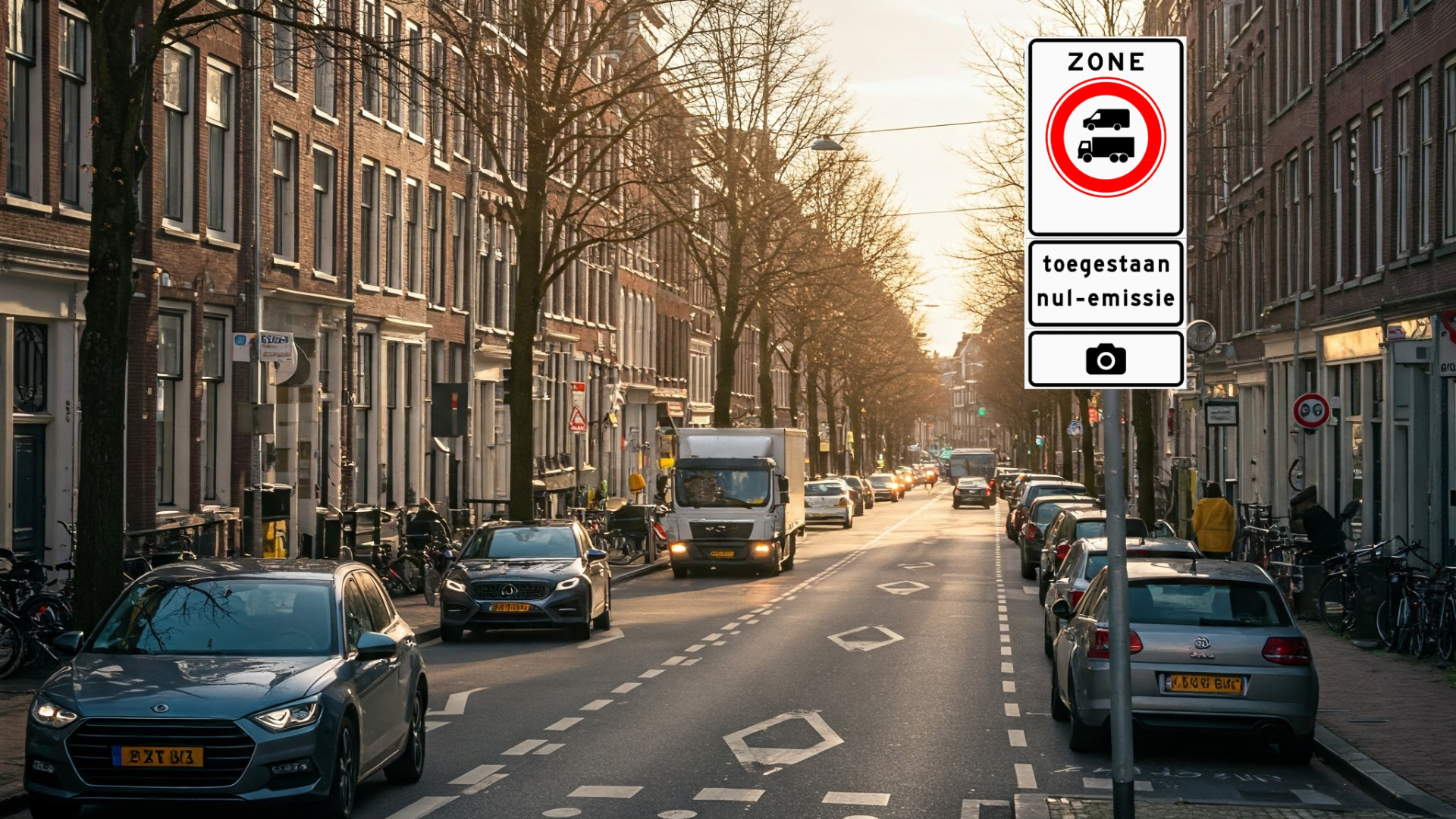Changes to environmental zones in the Netherlands in 2025
Environmental zones in the Netherlands
Despite its questionable effectiveness, more and more cities are introducing environmental zones. Municipalities are allowed to decide whether to do so, but must follow national regulations for environmental zones. This prevents every municipality from making its own rules. This creates clarity for road users.
Until now, there were two types of environmental zones that municipalities could choose from: the so-called green and blue environmental zone. The blue environmental zone is even a bit stricter than the green one, and thus it repels even more vehicles.
Still local regulations for environmental zones…
Even though the environmental zone policy is now basically set nationwide, there are a few local regulations. For example, municipalities may decide to exempt cabs and/or impose their own rules for them. Specifically for mopeds and motorcycles, municipalities may also deviate from national regulations. Amsterdam and The Hague, among others, ban older mopeds and motorcycles, each with their own conditions.
Tightened current environmental zones
As of Jan. 1, 2025, the national rules for environmental zones have been further tightened. The environmental zones as we know them so far apply only to diesel vehicles. You were only allowed to enter the green environmental zone with emission class Euro 3 or higher and the blue environmental zone only with Euro 4 or higher. Which emission class your vehicle has can be found on the registration certificate and in the technical data. You can also look it up at the RDW. Which year of manufacture belongs to a Euro class varies somewhat by type of vehicle.
As of Jan. 1, 2025, both variants of the environmental zone have been tightened. You may only enter the green zone with emission class Euro 4 or higher and the blue zone only with Euro 5 or higher.
Zero-emission zones for commercial vehicles by 2025
The biggest news is the introduction of a third variant: the zero-emission zone. That is, only vehicles without any emissions are allowed to enter that area. The new zero-emission zones apply only to commercial vehicles. Note that this is based on the actual use and design of the vehicle, not its registration with the RDW. In general, company cars are actually used as company cars and passenger cars as private cars, but there are some specific exceptions.
Suppose you have a van with commercial vehicle registration, but you use it exclusively as a private vehicle, you are still allowed to enter the zone. This applies, for example, to campers (designated as private vehicles) based on a van. So a private trip with the company van does not count. Conversely, cabs are private cars used as company vehicles, so they are not allowed to enter the zone.
Also for the zero-emission zone, it is a free choice for municipalities to introduce it or not. At the time of writing, some 40 municipalities have serious plans to introduce a zero-emission zone, or have even already done so. With major implications for business.
Transitional zero-emission zone
The introduction of the zero-emission zone is accompanied by a transitional arrangement. The zero-emission zone applies to all commercial vehicles registered on or after January 1, 2025. Commercial vehicles registered earlier may remain in the zero-emission zone a little longer, depending on their emission class. A distinction is made between commercial vehicles lighter and heavier than 3,500 kg.
- Commercial vehicles up to 3,500 kg and with emission class Euro 5 may still enter the zero-emission zone until January 1, 2027. With emission class Euro 6 may still enter until January 1, 2029.
- Commercial vehicles heavier than 3,500 kg with emission class Euro 6 and a first registration date of January 1, 2020 may still enter the zero-emission zone until January 1, 2030.
These vehicles are always exempt
There are some categories of vehicles that are always exempt from environmental zones and zero-emission zones. Those are:
- Wheelchair-accessible vehicles, or vehicles specially adapted for transporting people with disabilities. However, you must first apply for the exemption with the municipality.
- Vehicles modified for 500 euros or more for use by someone with a disability. This exemption must also first be applied for from the municipality.
- Vehicles 40 years old or older. This protects driving cultural heritage. Historic vehicles also have low mileage and make up a very small part of the total fleet.
Delve into local regulations
Thus, although environmental zones, including zero-emission zones, are part of national policy, there may still be local variations. Also, of course, it varies from city to city which area falls under the environmental or zero-emission zone. Therefore, it remains advisable to familiarize yourself with local regulations when you want to visit a city with a diesel vehicle, commercial vehicle, or moped or moped.

